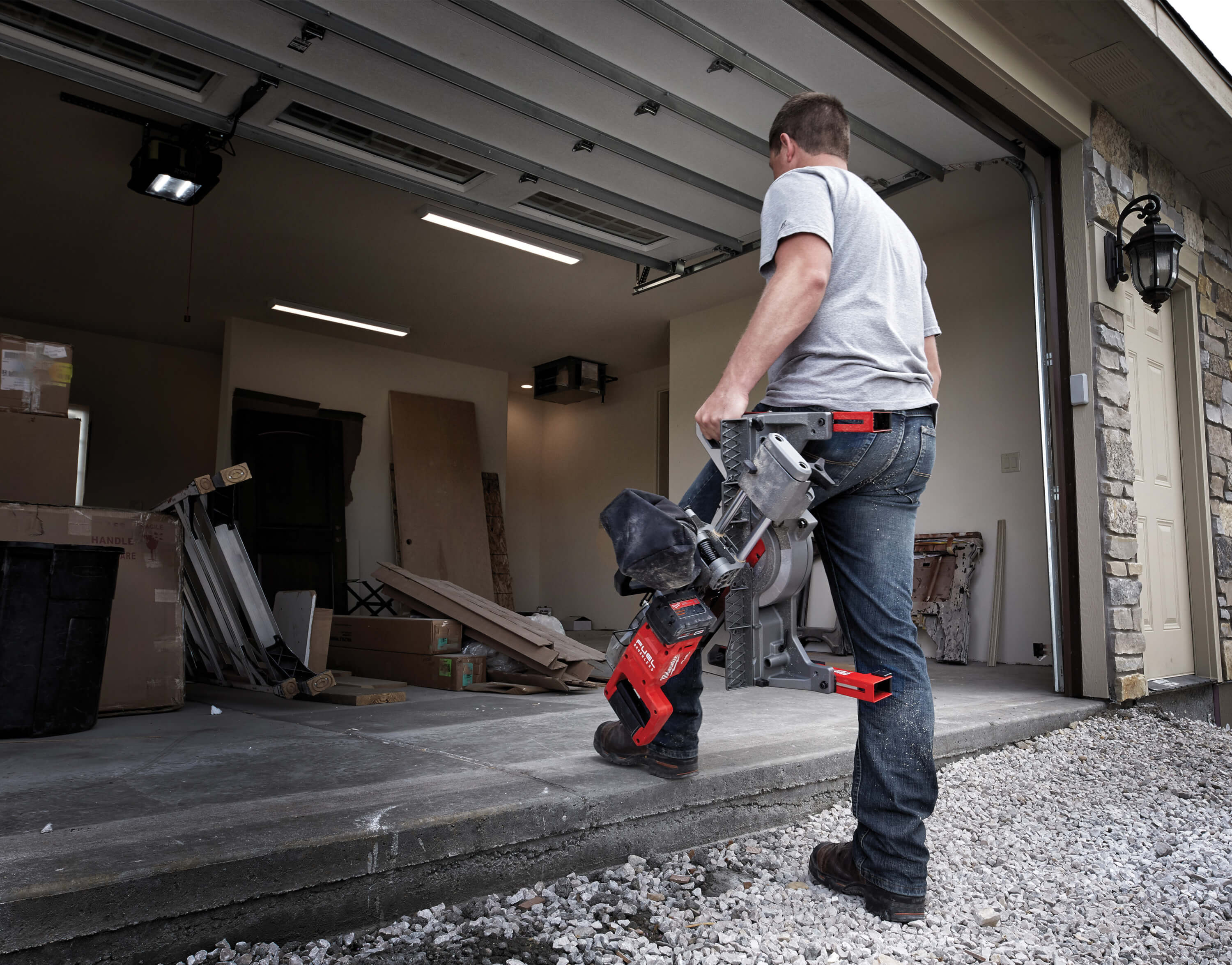of the best new gadgets designed to help make your workday a little more productive, to solve some tricky problems or to offer up some new creative possibilities.
Cordless Continues its Climb
Just ten years ago, cordless products were frequently disappointing: many tended to lack both power and stamina.
“Within the last two years, however, manufacturers have done a really good job of delivering the performance of an electric tool, but in a cordless product,” says Shawn Ottewell, Senior Vice President, Makita.
Makita’s new 18-volt x2 7-1/4″ circular saw (DRS780Z), for example, delivers the power of an electric saw in a cordless platform. “This allows professional
contractors to switch from electric to cordless without sacrificing power and performance,” says Ottewell. “For instance, the circular saw will cut 558 2x4s on a single charge. In most cases, that’s well over a day’s work.” He adds, “In previous battery generations you’d have to charge the battery at lunch break and coffee break and at the end the day, but now a professional can go to a job site with a single battery and work all day.”
Milwaukee Tools has a number of new entries in the cordless category, too. The M18 Sliding Dual Bevel Compound Miter Saw 10 inch blade will do 90 percent of the cuts in 4×4, 2×4, and trim materials, says Keith Potts, National Trainer, Milwaukee Tools Canada. “It has the power to cut all woods from MDF to hardwood to hardie board. Plus, it’s very accurate,” says Potts. “It has all the capacities of a corded 10 inch miter saw but it only weights 40 pounds, so it’s very portable, unlike some other cordless miter saws.”
For most manufacturers, the lineup of powerful, no-compromise cordless products continues to grow. “It’s really the direction the industry is heading,” says Ottewell. “I would say 20 per cent of the industry was cordless when I started with Makita in 1991. Now it’s closer to 60 per cent.” He adds, “I fully expect that within 10 years, the young people coming out of trades schools will say ‘I can’t believe you guys used to use electric tools.’”
Alternatives to Gas-Powered Tools
In addition to the shift away from electric, Ottewell notes the growing number of cordless options for many products traditionally powered by gasoline. “In the same way the automotive industry is moving from gas engines to electric, the power tool industry is doing the exact same thing,” says Ottewell. Makita has recently launched an 18-volt x2 chainsaw that offers contractors a more mobile option with no sacrifice to power. “It has the same speed and cutting performance as a 32cc gasoline chain saw and would allow professional contractors to switch from a gasoline engine to cordless without the headaches of mixed fuel, noise and emissions.”
Sub-Compact Options, Too Another trend, says Ottewell, is a need for subcompact tools, especially in more confined spaces where the very powerful tools might deliver more than a contractor needs. “Through brushless technology, motors are becoming smaller and smaller,” says Ottewell. “Makita’s sub compact drill, for example, delivers 18v power, but is the size of a 12v product.”



Photos courtesy of Makita Canada Inc.

Photo courtesy of King Canada Tools

Photo courtesy of Task Tools
Focus on Specializations
New tools for highly specialized work may not be needed every day, but they can help solve some key challenges. King Canada Tools, for example, has recently introduced a jam and undercut saw (KC-8363). “When someone is doing a renovation or a retrofit of a floor, this tool allows you to cut the bottom of the door jam off and then you can slide the floor tile underneath it,” says Ted Fuller, Vice President of King Canada Tools. “You get a nice even transition instead of trying to chip away at it with a hand saw or a variety of other tools.” He adds, “It takes the manual labour out of it and makes it machine operated. Plus, it’s more accurate because you can set the depth of the cut which allows you to just skim the wood and not chew into the structure underneath.”
Task Tools, too, has a new specialized tool: the 12” Reciprocating Saw Blade for Rigid Insulation. “The new blade—precision crafted in Switzerland —addresses contractors’ growing need for a tool to cut through rigid and semirigid insulation,” says Terry Hamer, Product Manager with Task Tools. “In the past, contractors have resorted to using sharpened putty knives, bread knives, hot wire tools and even chain saws. With the new blade, it’s not only much more efficient, but also much safer.” He adds, “Contractors are telling us it offers them better speed, flexibility, strength and accuracy.”
Milwaukee tools has a new option meant for electricians, but with broader appeal, as well. “The 2404 M12 12v hammer drill has a similar torque rating to some brushed 18 volt tools, but with Milwaukee technology, this tool is ideal for commercial electricians putting tapcons into cinder block walls, and plumbers’ and general contractors’ lighter work, but it still has a hammer function for concrete,” says Potts.


Photos courtesy of Task Tools of Milwaukee Tools


Photos courtesy of King Canada

Photo courtesy of EAB Canada
